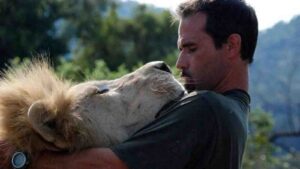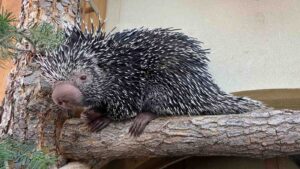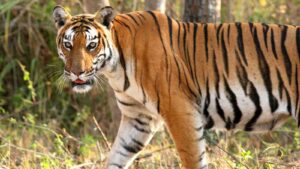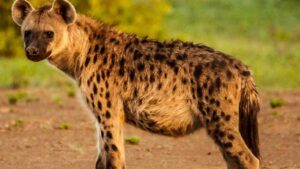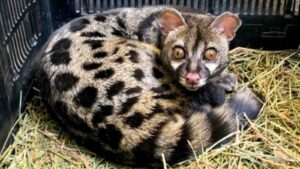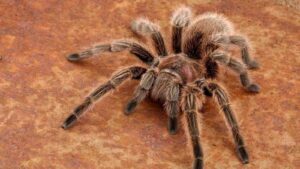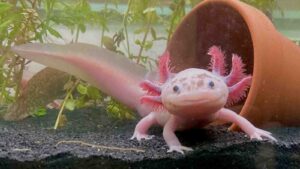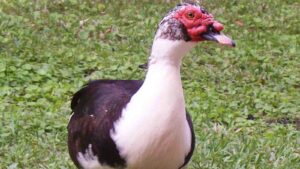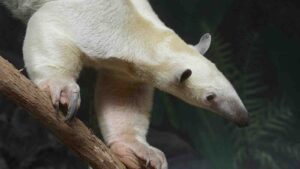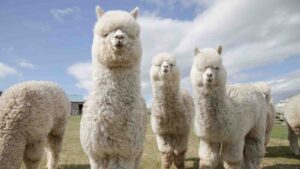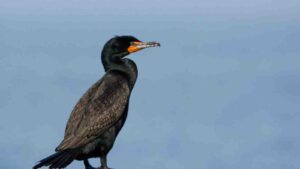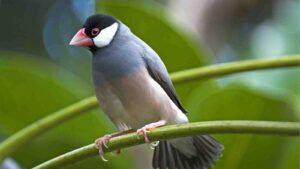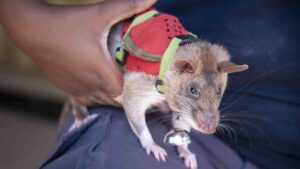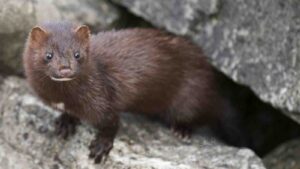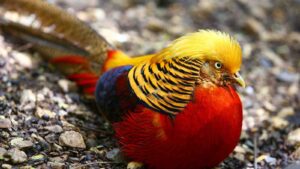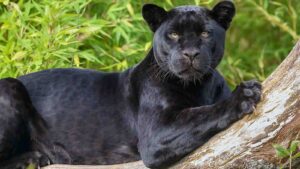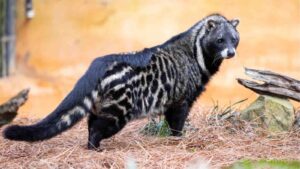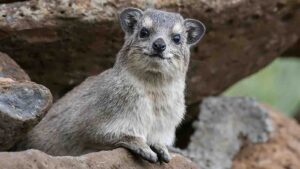Wild animals’ people actually own
Summary
Top 20 wild animals’ people actually own. Animals really are a man’s best friend, but instead of owning an ordinary pet pooch, people have gone above for the most incredible animal and human friendships. There are so many strangest animals’ […]
Top 20 wild animals’ people actually own. Animals really are a man’s best friend, but instead of owning an ordinary pet pooch, people have gone above for the most incredible animal and human friendships. There are so many strangest animals’ people actually own, which could be out of your imagination. Here are the top 20 wild animals’ people actually own.
Video: Top 20 wild animals’ people actually own
Lion
These wild animals are not domesticated ones; even if you raise them in a domestic environment, they are still wild and will act on their wild instincts. I will never in my life tell anyone keeping a lion as a pet, solely because they want one, is okay. Lion, the dangerous pets’ people own are mostly mid-size cats, like Servals and Caracals, which cost $1700.00 to $2800.00, and Ocelots can run as high as $15,000.00. Prices for lions range from 5,000 USD for an adolescent lioness to a whopping 140,000 USD for a rare white lion cub.
Video: Top 20 wild animals’ people actually own
Tailed Porcupine
While everyone knows what a porcupine is, many have not seen or heard of the funny-looking, tree-dwelling, prehensile-tailed weird and strangest animals from Central and South America. They are large rodents with an odor reminiscent of human BO (not everyone’s cup of tea), and that might be why they’ll never surge in popularity. In addition to that, they need a large and tall enclosure, being arboreal creatures.
Tiger
This exotic animal would not make a good pet. These are wild animals, and although a cub might be manageable for a short while, it would get large enough for the reason of loss of life just by playing around as they are so strong. This strangest animal tiger ranges in price from a $900.00 Bobcat to a $7500.00 tiger cub. Most of the mid-size cats, like Servals and Caracals, cost $1700.00 to $2800.00, and Ocelots can run as high as $15,000.00. The more rare the cat, the higher the price.
Hyena
Hyena, the scariest pets’ people actually own, can be kept as a pet, but with great safety precaution and care on your part as they are still wild animals. There are those who condemn keeping weirdest animals as pets but who ironically own dogs and cats themselves, forgetting that all domesticated animals were once wild. The famed Hyena Men of Africa walk around with them on chains, but they also keep them drugged and never let them get hungry.
Genets
Related to the mongoose but with the patterning of a wild cat, genes range from 2 to 6 pounds and 16 to 22 inches in length, excluding their long tail. Although genets have been kept in captivity since the Middle Ages and used to hunt rodents, they are now popular as exotic, though distinctly not cuddly, house pets. Genets need a large enclosure and several hours of outdoor playtime to remain healthy. Luckily, they are leash-trainable from a young age and will also use a litter box.
Tarantulas
There are over 800 species of tarantula and many that are kept as pets. The Chilean Rose is a popular species as they are harder and easier to care for. Females of the species can live up to 20 years in captivity, so owners need to be ready for a long-term relationship with their pet. Tarantulas aren’t the best pets for children or people who want to handle or cuddle their pets, as they spook easily and may fall and become injured or bite their owners. Their bites are poisonous, though not any more irritating than a bee sting.
Axolotls
Axolotls, also known as Mexican Walking Fish, are actually a type of salamander native to Mexico. Unlike other amphibians, they are known to remain aquatic their whole lives, so in captivity, they will need a well-filtered, temperature-regulated water tank with a gravel bottom. Axolotls are endangered in the wild and have very sensitive skin, which means they are a pet that is great for observation but not handling. They are legal to own in most states.
Muscovy ducks
Muscovies are a tropical duck native to Mexico and Central and South America. They are known to be docile, easy to raise, and quiet, which is rare for waterfowl. They can be affectionate pets, and the males are not aggressive. Muscovy ducks are easily adaptable, which means that escaped pets can become a nuisance to local fowl populations, so they must be kept on their owner’s property at all times or they risk being seized by the Fish and Wildlife Department.
Tamanduas
Small anteaters’ native to South America, tamanduas require extreme dedication from their owners if they are to be kept as pets. They are insectivores and love to eat termites but will also tolerate eggs, beef, and soft fruits. Tamanduas need warm environments, outdoor time, climbing obstacles, and a nest. They can be very snuggly and affectionate. They have no teeth, though they do have long front claws. They are considered exotic pets, which are not allowed in some states, and are also quite expensive to purchase, costing anywhere from $3,000 to $8,000.
Alpacas
Alpacas are a species of camelid native to South America, where they have been domesticated for thousands of years. Most often raised for their soft fleece, they are slowly becoming popular pets in the United States. They can grow to be 100 to 200 pounds, and they need a large outdoor space and the companionship of another alpaca in order to thrive. Alpacas are easy to train and transport, though it takes a while for them to bond with and trust their humans. They eat mainly grass or hay, making them an easy addition to an already established livestock or hobby farm.
Read More: Top 20 massive insects that are actually real
Cormorants
Famous French painter Henri de Toulouse-Lautrec had a pet cormorant. The cormorant would sit at a cafe on-leash while drinking absinthe with its owner. Cormorants also have a long history of domestication in parts of Asia, where they are trained to catch fish. In Japan, a bird will work with a single family for its entire life and is seen as a partner in the fishing trade. Despite the reverence they receive in some cultures, these birds are also often considered a nuisance by fishermen and are culled in parts of North America to ease their impact on fish populations.
Java finches
The Java finch is a relatively quiet, beautiful bird native to Indonesia, where its status is considered vulnerable in the wild. They are social amongst themselves and best kept in pairs or flocks, and they are typically too shy to bond well with humans. They need a cage high enough to fly in—about 7 feet tall—in addition to perches, swings, toys, and a bath basin. Java finches are prohibited to own in a handful of states.
Gambian pouched rats
Potentially invasive and largest animal rodent, Gambian pouched rats are nevertheless kept as pets in many parts of the world. They’re affectionate and intelligent, with a keen sense of smell, and have been trained to detect land mines in Tanzania as well as tuberculosis in human spit samples. Although bred in captivity, they are not domesticated and will quickly become unfriendly if not petted and played with daily. The interesting fact is they are prohibited to own as pets in the United States due to their connection to a 2003 outbreak of monkeypox.
Domestic mink
Although minks have been farmed for over 150 years in the United States and are considered domesticated, they are by no means a safe or easy pet to care for. They may look like ferrets, but they need a much larger cage and access to water in order to maintain their health. Because they are natural predators adept at taking down prey much larger than themselves, they should never come in contact with other household pets, including fish, rabbits, and even small dogs.
Prairie dogs
Prairie dogs are high-maintenance, social pets that require a lot of interaction. It’s not recommended that pet owners keep a single prairie dog unless they have adequate time to play with it. They are naturally nippy and aggressive, and only regular handling will keep them tame. They are also territorial and may try to defend the owner from strangers. Prairie dogs were not allowed as pets from 2003 to 2008 as they were implicated in an outbreak of monkeypox, but the ban was lifted in 2008.
Golden pheasants
Golden pheasants are a small, beautiful pheasant breed native to western and central China. They are hardy through the winter and don’t need a very large enclosure, making them popular in backyard aviaries. They also cohabitate well with waterfowl, pigeons, and doves. Because of their popularity as pets and food, wild populations are declining due to poaching, so be sure to purchase your golden pheasants from a reputable breeder.
Jaguar
If you have enough money, you probably can have a Jaguar as a pet, but it would still be a very bad idea. Jaguars are the strangest wild animals, and they have very special needs as far as being kept in captivity. They require a lot of food and space to keep them healthy. Not only that, but they are also large animal cats, which are very powerful.
Civets
Asian palm civets are viverrids that are about the size of a house cat. They are famous for the strange use of their droppings of inexpensive coffee called Kopi Luwak, where they are often incorrectly described as being a cat. In a Dutch study of various exotic pets, they were actually declared to be one of the best pets, along with Sitka deer, wallabies, and llamas. In 2002–03, civets sold for meat in local markets of China’s Yunnan province carried the virus from horseshoe bats to humans, resulting in 774 people losing their lives.
Sea Apple
What the heck is this thing? This is a funny animal known as the beautiful sea cucumber, which is an echinoderm like sea stars. Few people keep these unusual animals because, should they die, their toxins will end everything in the aquarium. Therefore, they are kept in tanks alone, called species-specific tanks. Sea cucumbers are also challenging to feed because they filter the seawater. They require a specialized diet and a mature tank with live rock.
Read More: 20 Extinct Animals Scientists Are Ready To Bring Back
Hyrax
While this strange animal resembles a marmot or some other common rodent, the fascinating thing about hyraxes is that they are the closest living relative to elephants. They are also related to managers. These quick little mammals actually have small “‘tusks” tucked away in their mouth, and they have a gestation period of about 7 to 8 months! These biggest animals are not commonly held as pets, but opportunities to get them do exist.
Among this list, which one can be your best friend? Let us know in the comment section.
